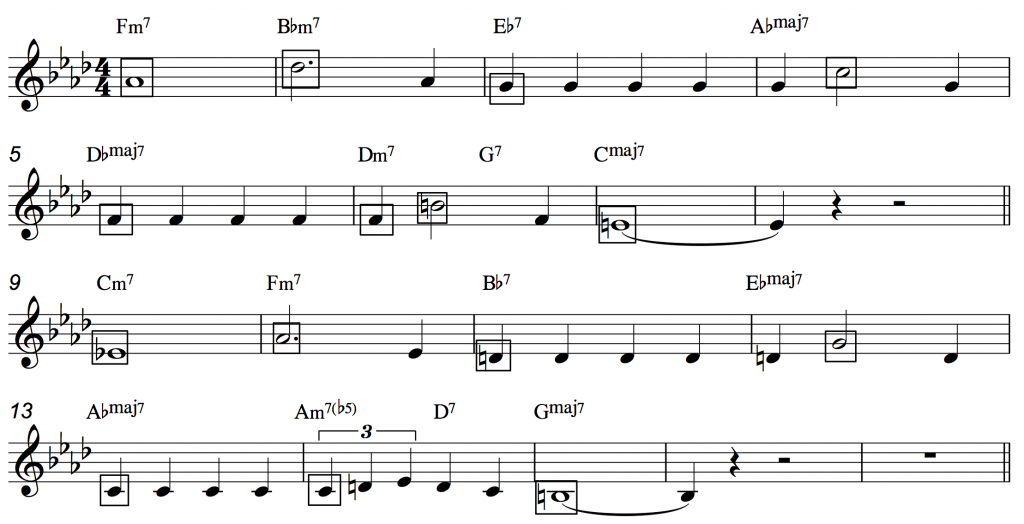learning Jazz piano online – lesson 18
Video lesson 18 of Learning Jazz Piano online is now available and is called ‘Decoding a jazz standard.’
Can you solo your way through any jazz standard? In order to do this, you need to interpret the song’s map and identify all its key centres. Lesson 18 of learning jazz piano online helps your achieve this.
I use Kern’s ‘All The Things You Are’ to take you through various techniques that will demystify tricky songs.
Seeing chords in isolation is not the way forward. Chords sit within groups that fit together into an overall structure. Learn more at the link below.
https://www.learnjazzpianoonline.com/lessons.html
Here’s an extract from my 3rd eBook: Learning Jazz Piano online:
There are countless excellent recordings of this song, but my personal favorite is by the pianist Hampton Hawes. The solo introduction is a little flowery, but once the trio kicks in, Hawes creates one glorious idea after another. See chapter 10 for details of this recording
The song form is usually described as ABC: 16 + 8 + 12 = 36 bars.
- A1 states the melody.
- A2 repeats it in a new key.
- B, the bridge, introduces a new 4-bar phrase and then transposes it down a minor 3rd.
- C returns to the original melody, but remains in the same key, taking an extra four bars to conclude.
The form could also be described as AABA: 8 + 8 + 8 + 12 = 36 bars.
A good songwriter takes great care when placing the targeted or emphasized melody note over its harmony. A strong, grounded melody note might be 1 or 5, but a more lyrical note is 3. This is Kern’s choice for most of his tune.
A song can be in any key that the singer or bandleader chooses. However, tunes played as jazz instrumentals often have default keys. All The Things You Are is usually written in Ab, so I’ll stick with that.
Here are the first 16 bars.
I’ve boxed all the 3s. Notice how every 3, with two exceptions, falls on beat 1 of the bar.

The two exceptions, in bars 4 and 12, occur at beat 2, as this is where the melodic accent falls.
